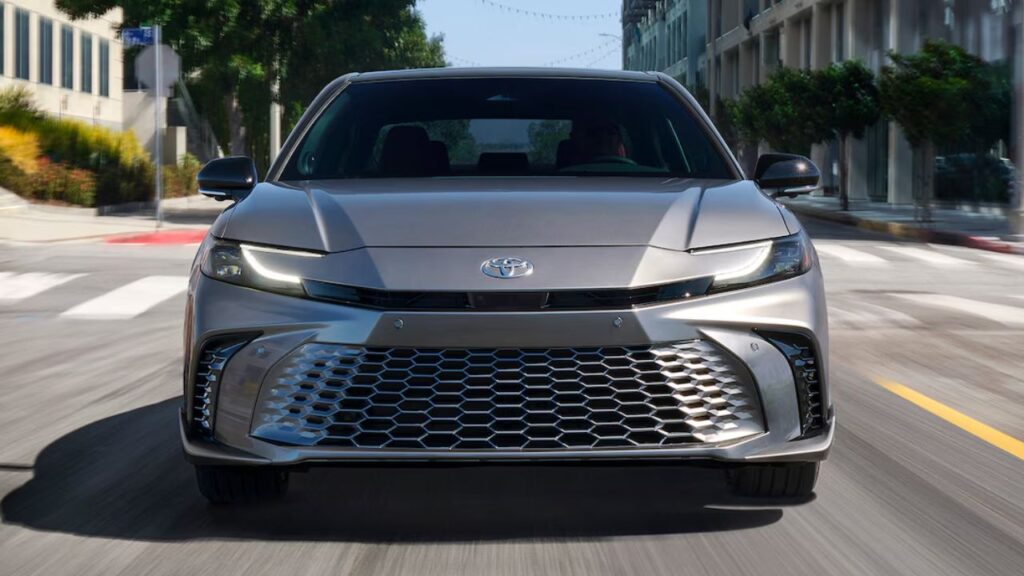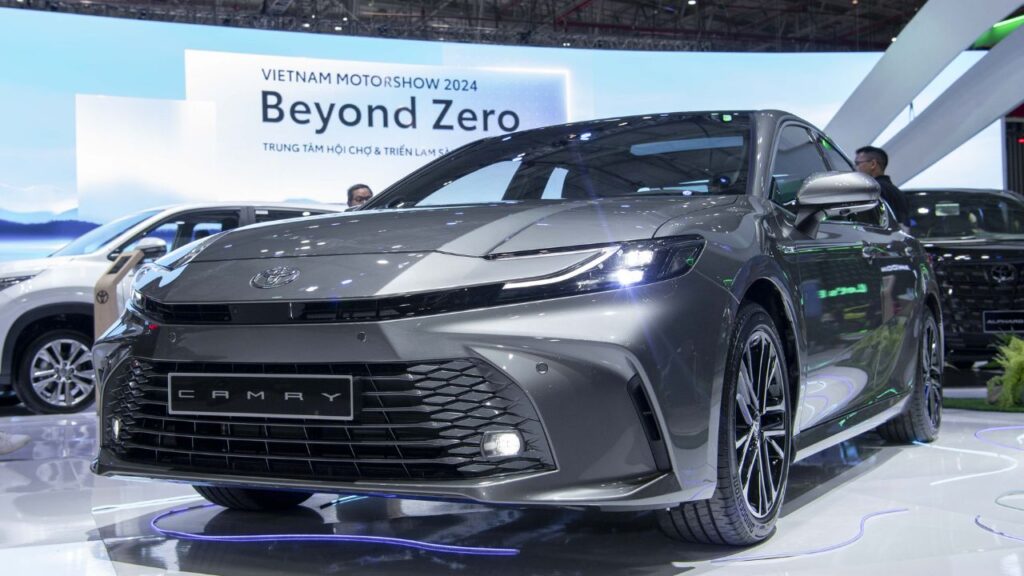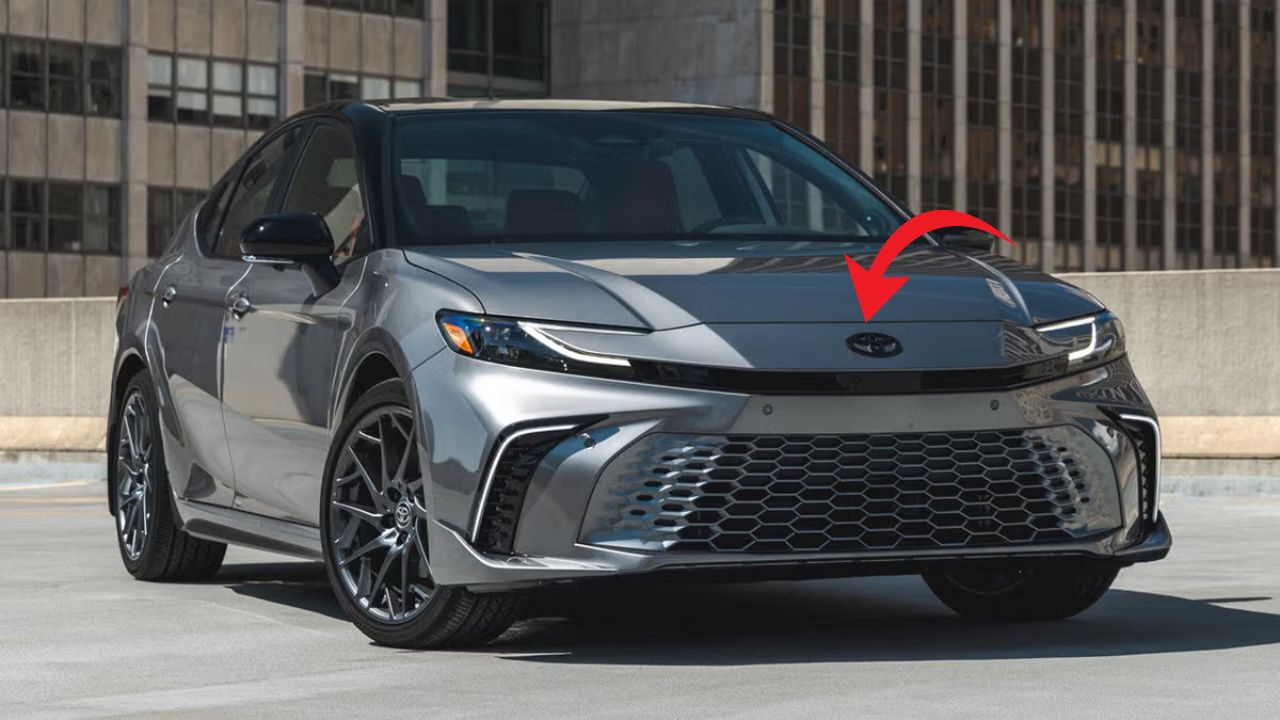The Australian automotive landscape has undergone dramatic transformation since Holden ceased local production. Where the Commodore once reigned supreme as Australia’s family sedan of choice, the Toyota Camry Hybrid has emerged as the undisputed leader in this evolving market segment.
This shift represents more than simple brand replacement. The Camry Hybrid’s success reflects changing consumer priorities toward fuel efficiency, environmental responsibility, and long-term value retention.

The Commodore Legacy and Market Void
Holden’s Commodore dominated Australian roads for decades, becoming synonymous with local automotive culture and family transportation. Its discontinuation left a significant gap in the market for spacious, powerful, and affordable family sedans.
The Commodore’s demise also marked the end of Australian automotive manufacturing, creating both nostalgia and practical challenges for consumers seeking similar vehicles. Many former Commodore buyers found themselves exploring alternatives they had never previously considered.
Why Hybrid Technology Appeals to Former Commodore Owners
Traditional Commodore buyers valued performance, space, and value for money above all else. The Camry Hybrid delivers these attributes through different technological approaches, proving that innovation can meet established expectations.
Fuel efficiency has become increasingly important as petrol prices remain volatile. The Camry Hybrid’s ability to achieve remarkable fuel economy while maintaining adequate performance appeals to cost-conscious families.
Cultural Shift in Australian Car Buying Preferences
Environmental awareness among Australian consumers has grown significantly in recent years. The Camry Hybrid allows buyers to reduce their environmental impact without sacrificing practical requirements.
Quality perceptions have also evolved, with Toyota’s reputation for reliability outweighing traditional preferences for local manufacturing. Long-term ownership costs increasingly influence purchase decisions more than initial brand loyalty.
Camry Hybrid Technology and Performance
Toyota’s hybrid system combines a conventional petrol engine with electric motor assistance to deliver impressive efficiency and smooth performance. The system operates seamlessly, automatically switching between power sources to optimize fuel consumption and performance delivery.
The latest generation system produces adequate power for highway driving and city commuting while achieving fuel consumption figures that would have seemed impossible in traditional sedans. This combination addresses two primary concerns of modern family car buyers.
Engine Configuration and Power Delivery
The 2.5-liter four-cylinder engine works in conjunction with electric motors to produce combined system output that rivals larger traditional engines. Power delivery is smooth and linear, avoiding the harsh characteristics sometimes associated with smaller forced-induction engines.
Electric motor torque fills in gaps in the power band, providing responsive acceleration from low speeds. This characteristic makes the Camry Hybrid feel more powerful than raw specifications might suggest, particularly in urban driving conditions.
Fuel Economy Achievement and Real-World Performance
Official fuel consumption figures consistently rank among the best in the sedan segment, with real-world driving often achieving results close to laboratory conditions. This consistency builds owner confidence and reduces range anxiety associated with fuel tank capacity.
Highway fuel economy remains impressive even when fully loaded with passengers and luggage. This capability makes the Camry Hybrid suitable for family holidays and long-distance touring that Commodore owners traditionally enjoyed.
Interior Space and Practicality Comparison
The Camry’s interior dimensions provide generous accommodation for five adult passengers, addressing one of the primary requirements that made the Commodore popular with Australian families. Rear seat space particularly impresses, offering adequate legroom and headroom for adults.
Boot space sufficiently accommodates family luggage requirements, though the hybrid battery system does compromise some storage capacity compared to conventional sedans. However, most owners find the remaining space adequate for typical use patterns.
Comfort and Convenience Features
Premium materials and build quality throughout the cabin create a more upmarket feel than the utilitarian Commodore interior. Soft-touch surfaces, quality trim pieces, and attention to detail demonstrate Toyota’s commitment to competing with premium sedans.
Technology integration includes modern infotainment systems, smartphone connectivity, and advanced climate control. These features represent significant advances over older Commodore models and align with contemporary buyer expectations.
Driving Position and Ergonomics
The driver’s seat provides excellent visibility and comfortable positioning for various body types. Controls fall easily to hand, and the dashboard layout prioritizes clarity and ease of use over complex styling.
Rear passengers benefit from comfortable seating and adequate amenities. Climate control vents, storage compartments, and charging points ensure all occupants remain comfortable during longer journeys.
Safety Technology and Protection Systems
Modern safety requirements have evolved significantly since the Commodore’s heyday, and the Camry Hybrid incorporates comprehensive protection systems as standard equipment. Five-star ANCAP ratings represent minimum acceptable standards rather than premium features.
Active safety systems work continuously to prevent accidents before they occur. These technologies represent fundamental advances over the passive safety systems that characterized older vehicles like the later Commodore models.
Advanced Driver Assistance Features
Toyota Safety Sense 2.0 comes standard across the Camry Hybrid range, providing autonomous emergency braking, lane departure warning, and adaptive cruise control. These systems reduce driver fatigue and help prevent common accident scenarios.
Blind spot monitoring and rear cross-traffic alert address visibility challenges inherent in sedan body styles. These features provide confidence when changing lanes or reversing from parking spaces in busy areas.
Structural Safety and Crash Protection
The Camry’s body structure incorporates high-strength steel and advanced crumple zones designed to modern safety standards. Multiple airbags provide comprehensive protection for all seating positions in various collision scenarios.
Crash testing results consistently demonstrate superior protection compared to older vehicles. The structural improvements represent one area where modern vehicles clearly surpass their predecessors regardless of brand loyalty considerations.
Market Positioning and Consumer Demographics
Toyota positions the Camry Hybrid to attract traditional sedan buyers who prioritize efficiency without sacrificing space and comfort. This strategy directly targets former Commodore owners seeking suitable replacements for their discontinued favorites.
Professional buyers appreciate the Camry’s refined image and low operating costs. Business users often require vehicles that project competence while minimizing fleet expenses, making the Camry Hybrid an attractive corporate choice.
Urban vs. Regional Market Appeal
City buyers benefit from the hybrid system’s efficiency during stop-and-go commuting and reduced emissions in urban environments. The quiet operation and smooth power delivery suit metropolitan driving conditions perfectly.
Regional buyers initially showed more resistance to hybrid technology due to concerns about reliability and service availability. However, Toyota’s extensive service network and proven hybrid reliability have largely addressed these concerns.
Fleet and Government Adoption
Government fleets increasingly specify hybrid vehicles to meet environmental targets and reduce operational costs. The Camry Hybrid’s combination of efficiency and traditional sedan practicality makes it suitable for various official applications.
Commercial fleets appreciate the lower fuel costs and reduced maintenance requirements. These benefits compound over high-mileage applications typical of fleet operations, making the business case compelling.
Ownership Costs and Value Retention
Total cost of ownership calculations favor the Camry Hybrid over traditional sedans when fuel costs, maintenance requirements, and resale values are considered. These economic advantages strengthen over longer ownership periods and higher annual mileage.
Resale values remain strong due to hybrid technology desirability and Toyota’s reputation for reliability. This characteristic particularly appeals to buyers who plan to trade vehicles after several years of ownership.
Maintenance Requirements and Service Costs
Hybrid systems require specialized knowledge for service and repair, but routine maintenance costs remain competitive with conventional vehicles. Toyota’s widespread service network ensures reasonable access to qualified technicians.
Extended service intervals reduce the frequency of required maintenance visits. The hybrid system’s reduced engine operating hours also contribute to longer component life and lower long-term maintenance costs.
Fuel Cost Analysis and Long-Term Savings
Current fuel prices make the Camry Hybrid’s efficiency advantages financially significant for typical family driving patterns. Annual fuel savings often exceed several hundred dollars compared to conventional sedans.
These savings accumulate over the ownership period, effectively reducing the total cost of ownership below similarly equipped conventional alternatives. The financial benefits increase with higher annual mileage and rising fuel costs.
Technology Integration and Connectivity
Modern connectivity features position the Camry Hybrid as a technology leader compared to discontinued models like the Commodore. Smartphone integration, navigation systems, and premium audio options meet contemporary expectations.
Over-the-air update capabilities ensure the infotainment system remains current throughout the ownership period. This feature provides long-term value and reduces the need for expensive hardware upgrades.
Infotainment System Capabilities
The touchscreen interface provides intuitive access to entertainment, navigation, and vehicle information. Voice recognition systems enable hands-free operation of major functions, improving safety and convenience.
Multiple USB ports and wireless charging accommodate various devices used by modern families. These features eliminate cable clutter while ensuring all passengers can maintain device connectivity.
Driver Information and Vehicle Monitoring
Digital instrument displays provide comprehensive information about hybrid system operation, fuel economy, and vehicle status. This information helps drivers optimize their efficiency and understand system behavior.
Maintenance reminders and diagnostic information help owners maintain their vehicles properly. These features reduce the likelihood of neglected maintenance that could compromise reliability or efficiency.
Environmental Impact and Sustainability
The Camry Hybrid’s reduced emissions represent a significant improvement over traditional sedans in terms of environmental impact. Lower fuel consumption directly translates to reduced carbon dioxide emissions and air pollution.
Lifecycle analysis demonstrates environmental benefits throughout the vehicle’s operational life. These advantages become more pronounced as electricity generation increasingly incorporates renewable energy sources.
Manufacturing and Production Considerations
Toyota’s manufacturing processes incorporate sustainable practices and materials to minimize environmental impact during production. These initiatives address growing consumer awareness of environmental issues beyond operational emissions.
Recycling programs ensure responsible disposal of hybrid components at end of life. Battery recycling and material recovery programs reduce the environmental impact of vehicle disposal and support circular economy principles.
Future Electrification Pathway
The Camry Hybrid serves as a stepping stone toward full electrification for many buyers. The hybrid experience familiarizes owners with electric drive characteristics and builds confidence in alternative powertrains.
Future Camry variants may incorporate plug-in hybrid or full electric powertrains as technology develops and charging infrastructure expands. Toyota’s hybrid experience provides a foundation for these advanced systems.
Comparison with International Markets
The Camry Hybrid’s success in Australia mirrors trends in other markets where sedan segments have evolved toward efficiency and environmental responsibility. International sales data support the viability of hybrid technology in family sedan applications.
Pricing strategies in Australia reflect global cost structures while remaining competitive with local alternatives. This balance helps maintain affordability while supporting continued model development and improvement.
Global Platform Benefits
Shared global platforms enable Toyota to spread development costs across multiple markets while maintaining local market relevance. Australian buyers benefit from advanced technology and features that might not be viable in a smaller market alone.
Economies of scale in production reduce manufacturing costs and improve availability. These benefits translate to better pricing and more consistent supply for Australian consumers.
Regulatory Compliance and Standards

Australian Design Rules and emissions standards influence model specifications and availability. The Camry Hybrid’s compliance with these requirements ensures continued availability while meeting environmental regulations.
Future regulatory changes may favor hybrid and electric vehicles through incentives or restrictions on conventional powertrains. The Camry Hybrid’s positioning prepares buyers for potential policy changes.
Future Market Outlook
The sedan segment faces ongoing challenges from SUV popularity, but hybrid technology provides a compelling value proposition for buyers who prioritize efficiency and driving dynamics. The Camry Hybrid’s success demonstrates continued market demand for traditional sedan configurations.
Competition from other hybrid sedans will intensify as manufacturers respond to changing consumer preferences. This competition should drive continued innovation and improvement in hybrid technology and features.
Technology Development Trends
Future Camry Hybrid variants will likely incorporate more advanced hybrid systems, improved fuel economy, and enhanced connectivity features. These developments will maintain competitiveness against evolving alternatives.
Autonomous driving technology may eventually be integrated into hybrid platforms like the Camry. These systems could provide additional value and differentiation in an increasingly competitive market.
Frequently Asked Questions
Q1: How does the Camry Hybrid’s fuel economy compare to the old Holden Commodore?
The Camry Hybrid achieves approximately 4.2L/100km combined fuel consumption, roughly half the fuel use of a comparable V6 Commodore, which typically consumed 8- 10L/100km.
Q2: Can the Camry Hybrid match the Commodore’s towing capacity?
The Camry Hybrid can tow up to 1,600kg when properly equipped, which is less than the Commodore’s capacity but sufficient for most family towing needs like small boats or trailers.
Q3: What warranty coverage does Toyota provide on the Camry Hybrid system?
Toyota offers a comprehensive warranty including 8 years/160,000km coverage on the hybrid battery system, plus 5 years/unlimited km coverage on the vehicle itself.
Also Read: Tesla Model 3 Dominates Mid-Size Car Sales in Australia

